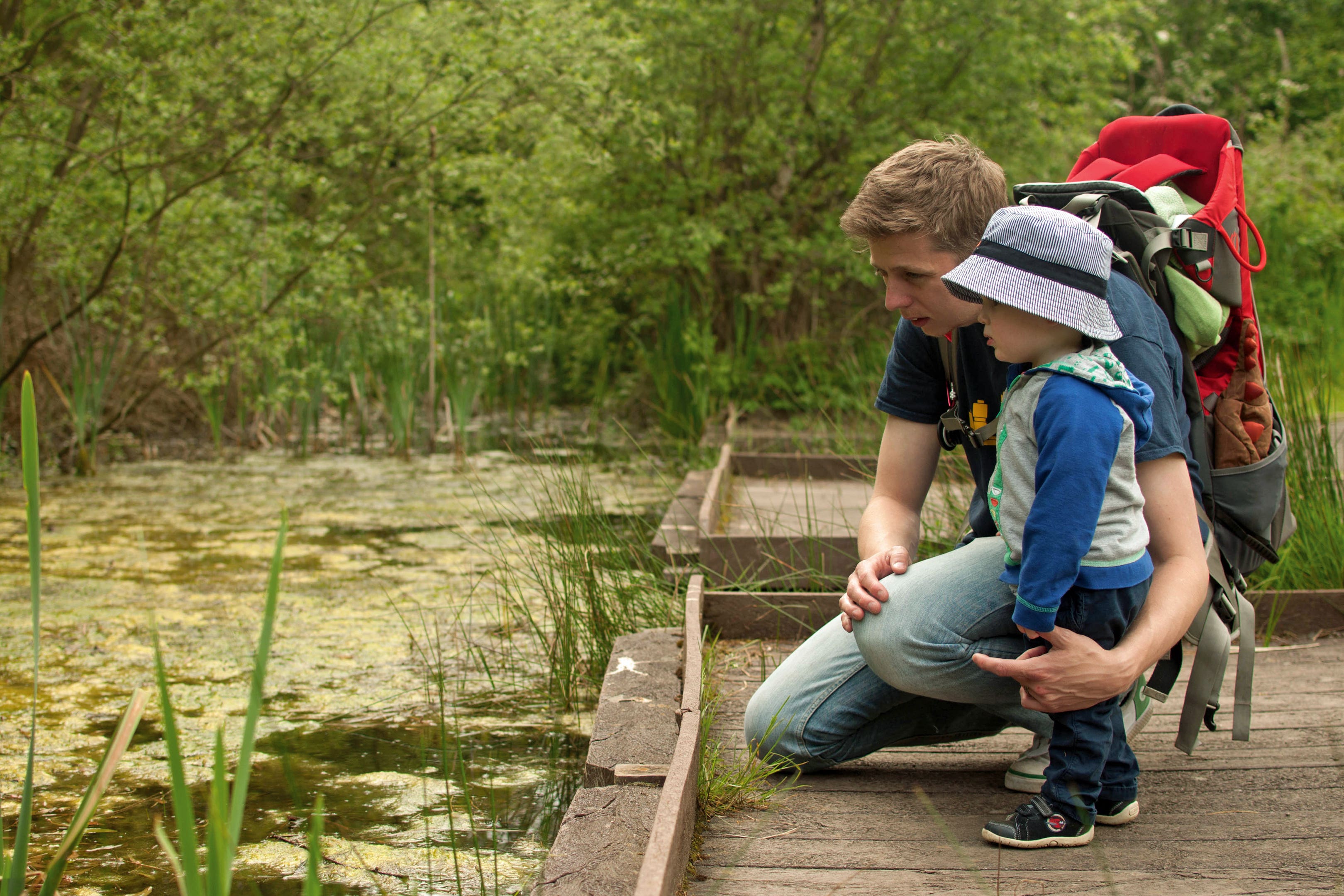Autumn walks to help kids become interested in nature
In the run-up to The Wildlife Trusts’ Big Wild Walk, there are ways to make walks a family affair, says Hannah Stephenson.

Your support helps us to tell the story
From reproductive rights to climate change to Big Tech, The Independent is on the ground when the story is developing. Whether it's investigating the financials of Elon Musk's pro-Trump PAC or producing our latest documentary, 'The A Word', which shines a light on the American women fighting for reproductive rights, we know how important it is to parse out the facts from the messaging.
At such a critical moment in US history, we need reporters on the ground. Your donation allows us to keep sending journalists to speak to both sides of the story.
The Independent is trusted by Americans across the entire political spectrum. And unlike many other quality news outlets, we choose not to lock Americans out of our reporting and analysis with paywalls. We believe quality journalism should be available to everyone, paid for by those who can afford it.
Your support makes all the difference.If your kids would rather be sitting in front of the TV than going for a walk, perhaps they need a little gentle persuasion.
As The Wildlife Trusts’ Big Wild Walk fundraiser (October 24-30) aims to encourage people to walk 30km during that week, and sets a hedgehog challenge of 3km for people with young children – the same distance a hedgehog can cover in a night – you may need to find more interesting walks to encourage little ones into the open air.
Lizzie Foster, Team Wilder engagement officer at Surrey Wildlife Trust, who takes school groups out into the ancient woodland at Nower Wood in Surrey for curriculum and wellbeing sessions, offers the following tips…
Scavenger hunts
“Do sensory activities like scavenger hunts, looking for different textures, smells and colours, which keep children on the look-out for things, whether it’s the reds and oranges of the leaves of trees (and autumn is a brilliant time for this) or chestnut cases which are spiky on the outside or velvety in the middle, it just gets them noticing new things.”
Suggested walk: Brockholes, near Preston, Lancs (brockholes.org):
Families can explore some 250 acres of woods, lakes, walking trails, hides and children’s play areas, plus a floating visitor centre at this Lancashire Wildlife Trust reserve. In October, Boilton Wood at Brockholes quickly transforms into a rich tapestry of colour, from burnt orange to vivid reds, and is home to nuthatches, robins, jays and blue tits. Half term events include a Halloween Xplorer Challenge – a family orienteering map challenge.
Natural art
“As you have a flash of colours on the floor, you could do natural arts on walks,” Foster suggests. “It could be as simple as collecting leaves and sticks or pebbles.
“Children can use their imagination to create some art on the ground. Clear leaves to give you a blank canvas on the ground. Some students create spirals, others do animals out of the materials, and others build mini-homes for wildlife, so it gets them engaged as you walk, and then you can stop while they put it all together.”
Suggested walk: Castle Ward, County Down (nationaltrust.org.uk): Stroll through this 820-acre walled demesne along trails that wind their way through atmospheric woodland, parkland and gardens. At Temple Water, Japanese maples will be in full colour and youngsters should be able to use some of their fallen colourful leaves for natural art.
Sound check
“We never really stop and listen to the sounds of nature in our woodlands. Stop, sit on a log or stand and listen. Count the different sounds that you hear. At this time of year, you can hear acorns drop on to the ground, leaves rustling and, if you’re on a walk with families, you might hear people in the distance laughing or talking, and the birds as well. There’s a lot you can hear that we don’t take time to notice.”
Suggested walk: Potteric Carr, near Doncaster, Yorkshire (ywt.org.uk/potteric-carr): At nearly 500 acres, this is one of Yorkshire Wildlife Trust’s biggest reserves, featuring lakes, woodland, and surrounding meadows bathed in the low sunlight, perfect for enjoying the peace and quiet, as well as listening out for the sounds of wildlife, water and leaves blowing in the wind.
A network of easily accessible paths offer walks of between one and four miles, perfect for mini explorers. Spot marsh harriers, roe deer, and maybe bittern, but don’t forget to keep an eye out for the glimpse of a newt, or the rustle of a harvest mouse in longer grass.
Woodland wonders
“There are a lot of things like fallen logs or leaves on the ground in woodlands, and if you lift them up you can see mini-beasts like beetles, worms, slugs, woodlice and millipedes underneath. Kids love to find creatures or wildlife. The simple task of lifting a small log they can handle, or with a parent’s help, they can see a lot of creatures which haven’t ventured underground yet for the winter.”
Suggested walk: Hughenden, Buckinghamshire (nationaltrust.org.uk): Youngsters can take part in a mini-beast hunt on Oct 25 and 27, as families explore the Disraelis’ pleasure grounds and parklands, with the chance to see the burnt oranges and soft yellows of autumn, celebrate the season’s sights, sounds and sensations in Hughenden’s gardens, and the rolling countryside.
Spotter sheets
“You can make your own spotter sheets, or we have them on our wildlife spotter website (wildlifewatch.org.uk/activities) – to spot seasonal things to find – to keep kids going.”
Suggested walk: Cragside, Northumberland (nationaltrust.org.uk):
With an estimated seven million trees and shrubs, including many pine and a collection of deciduous trees, there should be swathes of red and golden yellow leaves in evidence. Cragside’s autumn forage and find challenge can be printed off at home from the website.
Big Wild Walk starts on Oct 24-30. For details visit wildlifetrusts.org/bigwildwalk